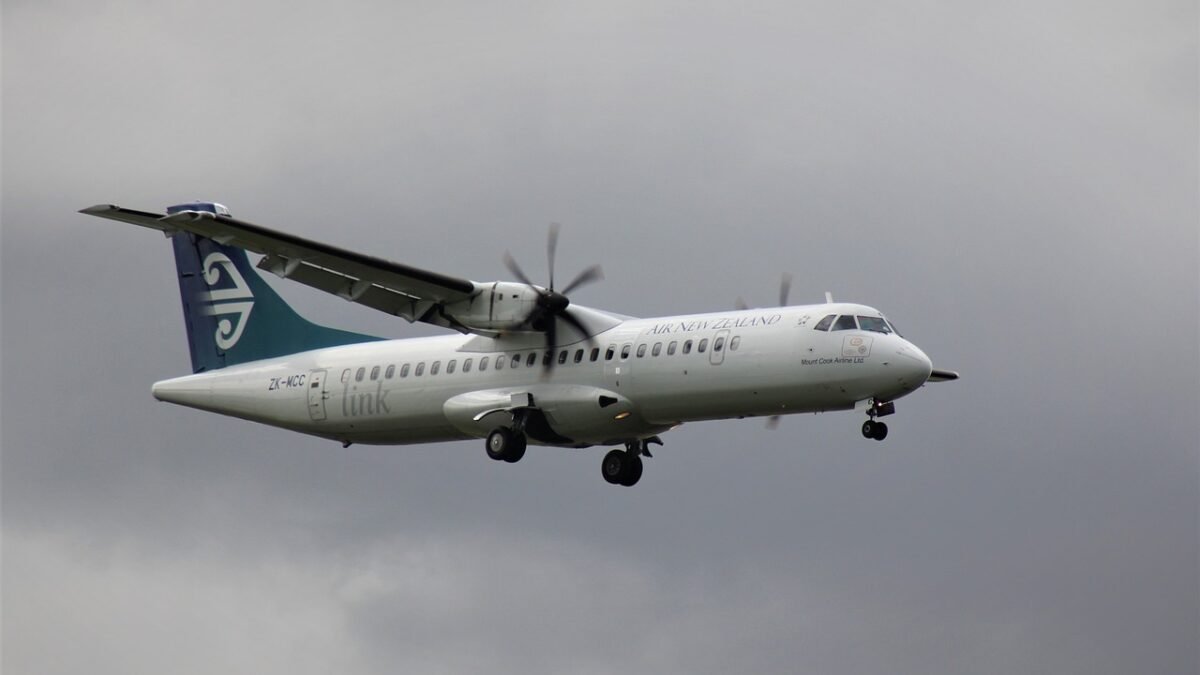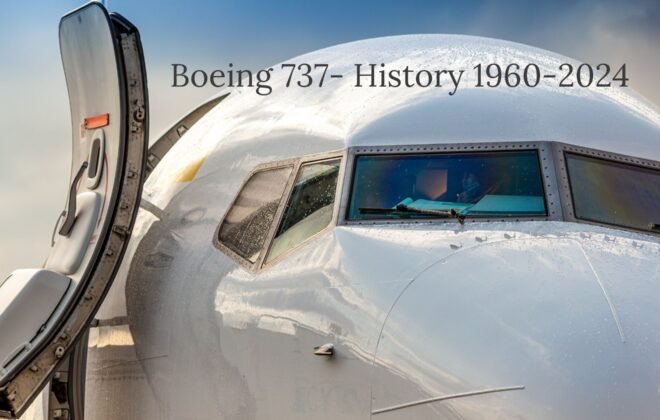ATR 72 A Robust and Safe Aircraft

ATR 72 is a robust and safe aircraft – The Aircraft history
The ATR 72 is a twin-engine turboprop regional airliner developed and produced by the French-Italian aircraft manufacturer ATR. It first flew in October 1988 and was introduced into service in 1989. It seats up to 78 passengers and is typically used for regional and short-haul flights. The aircraft has undergone several upgrades throughout its production, with the latest version being the ATR 72-600. As of 2021, over 800 ATR 72 aircraft have been delivered to customers worldwide.
The ATR 72 is known for its reliability, fuel efficiency, and low operating costs, making it a popular choice for regional airlines and smaller operators. It has a range of around 1,500 km (930 mi) and is powered by two Pratt & Whitney Canada PW127 or PW127M engines. The aircraft has a maximum cruise speed of around 500 km/h (311 mph) and can operate on short and unpaved runways.
In addition to its commercial use, the ATR 72 has also been adapted for other roles, such as maritime surveillance, air ambulance, and cargo operations. The aircraft has also been used by several military and government organizations worldwide.
ATR has continued to improve the design and technology of the ATR 72. In 2013, the company introduced the ATR 72-600, which features new avionics, improved engines, and higher seating capacity. In 2019, the company announced it will develop a hybrid-electric version of the ATR 72.
Overall, the ATR 72 has proven to be a valuable asset to the regional aviation industry and is a popular choice for airlines and operators worldwide.
Safety
The ATR 72 has a good safety record, with only a few significant aircraft-related incidents. However, like any aircraft, the ATR 72 can be affected by maintenance issues, weather conditions, and pilot errors, which can result in accidents.
The ATR 72 is designed and built to meet the safety standards of the Federal Aviation Administration (FAA) and the European Aviation Safety Agency (EASA). It has multiple safety features, such as anti-icing systems, redundant flight controls, and automatic stall protection.
ATR has also implemented several safety initiatives to improve the safety of its aircraft. For example, the company has introduced a flight data analysis program that allows operators to monitor the performance of their aircraft in real time and identify any potential issues before they become a problem.
Overall, the ATR 72 has a good safety record, and ATR continues to focus on safety improvements to ensure the safety of passengers and crew.
In addition to the safety features and initiatives implemented by ATR, the ATR 72 also undergoes regular safety inspections and maintenance to ensure that the aircraft is in good condition and meets all safety standards.
However, there have been some incidents involving ATR 72. Some examples include:
- In 1994, an ATR 72 operated by USAir Express crashed in North Carolina, killing all 37 passengers and crew on board. The National Transportation Safety Board (NTSB) determined that the accident was caused by the pilot’s failure to properly set the flaps and slats during takeoff.
- In 2002, an ATR 72 operated by Air Philippines crashed into a mountain, killing all 131 passengers and crew on board. The accident was caused by poor navigation and a lack of proper weather information provided to the crew.
- In 2015, an ATR 72 operated by TransAsia Airways crashed in Taiwan, killing 43 people. The accident was caused by the pilots shutting down the wrong engine after the other one failed.
It’s important to note that these incidents were rare, and ATR 72’s safety record is considered very good overall.
It’s also worth mentioning that the incidents that happened were not necessarily caused by the aircraft design but by human error, poor maintenance, or inadequate weather information, which are common causes of accidents in the aviation industry.
Overall, the ATR 72 has a good safety record, and ATR continues to focus on safety improvements to ensure the safety of passengers and crew.
Nepal
Nepal is a country in South Asia, located between India and China. It is known for its rugged Himalayan terrain, which includes Mount Everest, the highest peak in the world. Nepal is a popular destination for trekkers, mountaineers, and those interested in its rich culture and history.
Nepal has a developing economy, with agriculture being the main source of livelihood for the majority of the population. However, tourism is also an important industry in Nepal, with thousands of visitors visiting the country every year to trek in the Himalayas and explore the country’s cultural heritage.
Regarding air travel, Nepal has only one international airport, Tribhuvan International Airport, located in Kathmandu. The country has several domestic airlines, including Nepal Airlines, which operates the ATR 72 aircraft.
ATR 72 – Accident history and reason in Nepal
There have been several accidents involving ATR 72 aircraft in Nepal. Some examples include:
- In 1992, an ATR 42 operated by Nepal Airlines crashed near Kathmandu, killing all 18 passengers and crew on board. The accident was caused by many factors, including poor weather conditions, a lack of proper navigation equipment, and inadequate pilot training.
- In 2014, an ATR 72 operated by Tara Air crashed in western Nepal, killing all 23 passengers and crew on board. The accident was caused by poor weather conditions and an error by the pilot in controlling the aircraft’s altitude.
- In 2018, an ATR 72 operated by US-Bangla Airlines crashed at Tribhuvan International Airport in Kathmandu, killing 51 people. The accident was caused by the pilot’s confusion over the runway direction, poor communication between the pilot and air traffic control, and inadequate pilot training.
It’s worth noting that these accidents were not caused by the aircraft’s design but rather by human error and inadequate maintenance, training, and safety procedures.
Following these incidents, Nepal’s Civil Aviation Authority (CAA) has taken steps to improve safety in the country’s aviation industry. For example, it has strengthened regulations on pilot training and aircraft maintenance and has improved the oversight of airlines operating in the country.
Overall, while Nepal’s aviation industry has had some safety challenges in the past, the authorities are working to improve safety and reduce the risk of accidents in the future.
In addition to these steps, Nepal’s Civil Aviation Authority (CAA) has also implemented measures to improve the safety of ATR 72 aircraft specifically. For example, the CAA has ordered operators to replace the original avionics equipment with modern equipment and has also ordered operators to install new safety equipment, such as terrain awareness and warning systems (TAWS) and enhanced ground proximity warning systems (EGPWS) in the ATR 72 aircraft. These safety systems help to alert pilots of potential hazards and reduce the risk of accidents.
It’s worth noting that the ATR 72 aircraft is still in service in Nepal and that the aircraft type itself is still considered safe to operate by authorities. The incidents that happened in the past were caused by human error, poor maintenance, and inadequate safety procedures, which are common causes of accidents in the aviation industry.
In summary, while Nepal’s aviation industry has had some safety challenges in the past, the authorities are working to improve safety and reduce the risk of accidents in the future. The ATR 72 aircraft is still considered safe to operate and is still in service with Nepal Airlines, Tara Air, and other domestic airlines.
Yeti Airways Nepal and ATR History
Yeti Airways is a Nepalese airline based in Kathmandu, Nepal. The airline operates scheduled flights to destinations within Nepal and international destinations in India and Bhutan.
Yeti Airlines operates a fleet of ATR 72 aircraft. These aircraft are used for both domestic and international flights.
Yeti Airlines has had several incidents involving ATR 72 aircraft. For example, in 2008, an ATR 72 operated by Yeti Airlines overran the runway during landing in Bhadrapur, Nepal, causing damage to the aircraft but no injuries. In 2014, an ATR 72 operated by Yeti Airlines was hijacked by a co-pilot during a domestic flight in Nepal. The aircraft was later safely landed at an airport in Kathmandu, and the co-pilot was arrested.
It’s worth noting that these incidents were not caused by the aircraft’s design, but rather by human error or criminal actions.
As with any airline, Yeti Airlines is subject to safety regulations and oversight by Nepal’s Civil Aviation Authority (CAA), and the airline must meet the safety standards set by the International Air Transport Association (IATA) and the International Civil Aviation Organization (ICAO).
While Yeti Airlines has had some incidents in the past, the airline operates under the safety regulations and oversight of the relevant authorities and operates ATR 72 aircraft which are considered safe to operate by authorities.
Human Error and weather’s role in aircraft Incidents and Accidents in Nepal
Human error and poor weather conditions have been identified as major factors in several incidents and accidents involving aircraft in Nepal.
Accidents have often been caused by human error and poor weather conditions. For example, the 1992 crash of an ATR 42 operated by Nepal Airlines was caused by poor weather conditions, a lack of proper navigation equipment, and inadequate pilot training. Similarly, the 2014 crash of an ATR 72 operated by Tara Air was caused by poor weather conditions and an error by the pilot in controlling the aircraft’s altitude.
Poor weather conditions in Nepal can also make it difficult for pilots to navigate and land safely. The mountainous terrain of Nepal, combined with frequent storms and poor visibility, can make flying conditions challenging, particularly in the Himalayan region. As a result, pilots must be well-trained and experienced to operate in these conditions.
In addition, inadequate maintenance, lack of proper communication between pilots and air traffic control, and inadequate training are some human errors that have contributed to accidents in Nepal’s aviation industry.
It’s worth noting that the Civil Aviation Authority of Nepal (CAAN) has been working to improve the safety of the aviation industry in Nepal by implementing international safety standards and regulations. However, implementing these standards and regulations alone may not be enough to overcome the challenges presented by Nepal’s difficult weather and terrain.
Airlines operating in Nepal also have a role to play in ensuring safety by providing proper training for pilots, performing regular maintenance on aircraft, and having adequate safety procedures in place.
In addition, the weather conditions in Nepal can be unpredictable and rapidly changing; it’s essential for pilots to have real-time weather information and to make decisions based on the current conditions.
Overall, while Nepal’s aviation industry has faced challenges due to problematic weather and terrain and human error, the authorities are working to improve safety and reduce the risk of accidents. Airlines operating in Nepal must also take responsibility for ensuring safety by providing proper training, performing regular maintenance, and having adequate safety procedures in place.
To charter airliners worldwide, please get in touch with SafeFly Aviation
mail:info@safefly.aero
Writen by: Sudip Sharma
Director, Safe Fly Aviation Service Pvt Ltd.
The writer has been associated with the ground operations and maintenance of ATR 72 aircraft during his 25-year-long aviation career.




